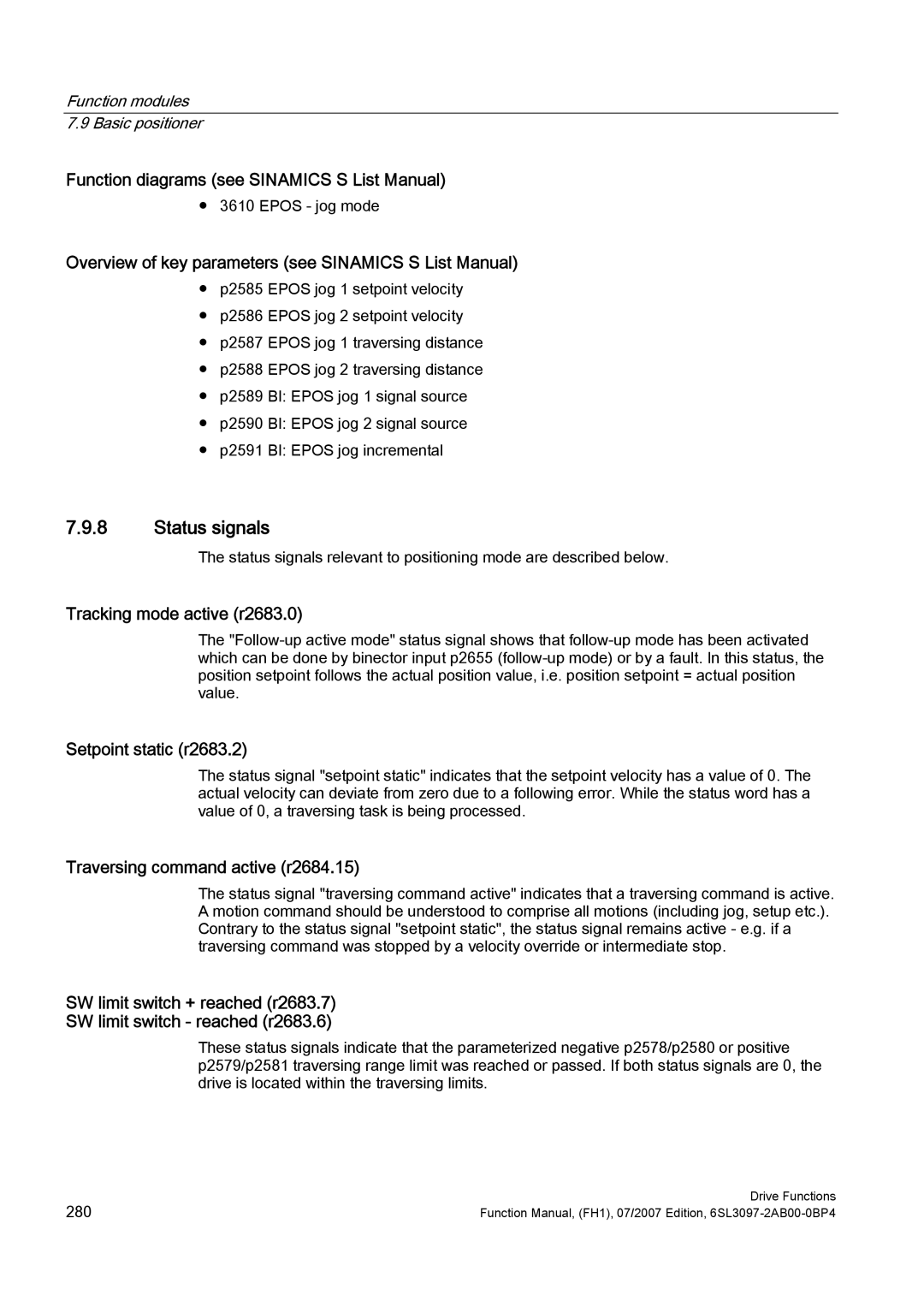Function modules 7.9 Basic positioner
Function diagrams (see SINAMICS S List Manual)
● 3610 EPOS - jog mode
Overview of key parameters (see SINAMICS S List Manual)
●p2585 EPOS jog 1 setpoint velocity
●p2586 EPOS jog 2 setpoint velocity
●p2587 EPOS jog 1 traversing distance
●p2588 EPOS jog 2 traversing distance
●p2589 BI: EPOS jog 1 signal source
●p2590 BI: EPOS jog 2 signal source
●p2591 BI: EPOS jog incremental
7.9.8Status signals
The status signals relevant to positioning mode are described below.
Tracking mode active (r2683.0)
The
Setpoint static (r2683.2)
The status signal "setpoint static" indicates that the setpoint velocity has a value of 0. The actual velocity can deviate from zero due to a following error. While the status word has a value of 0, a traversing task is being processed.
Traversing command active (r2684.15)
The status signal "traversing command active" indicates that a traversing command is active. A motion command should be understood to comprise all motions (including jog, setup etc.). Contrary to the status signal "setpoint static", the status signal remains active - e.g. if a traversing command was stopped by a velocity override or intermediate stop.
SW limit switch + reached (r2683.7)
SW limit switch - reached (r2683.6)
These status signals indicate that the parameterized negative p2578/p2580 or positive p2579/p2581 traversing range limit was reached or passed. If both status signals are 0, the drive is located within the traversing limits.
280 | Drive Functions |
Function Manual, (FH1), 07/2007 Edition, |
